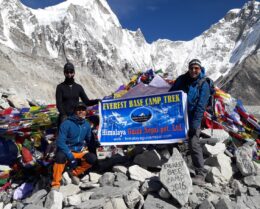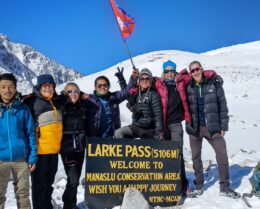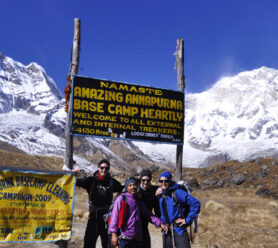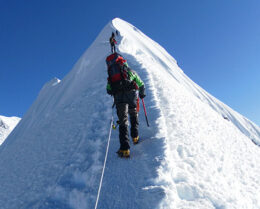Things You Should Know Before You Go to Tibet
UPDATED ON 16 February, 2024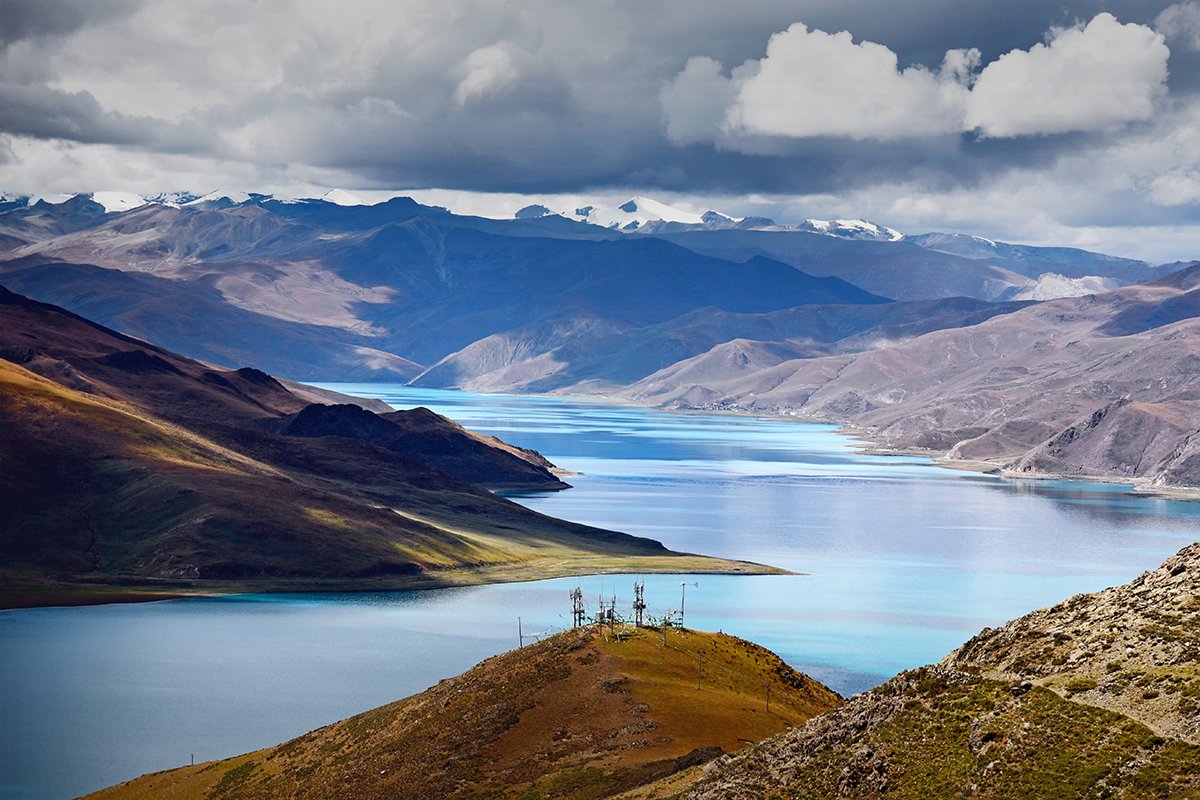
The history of Tibet is a rich tapestry woven with threads of spirituality, lifestyle, politics, and resilience. Situated at the excessive-altitude Tibetan Plateau, Tibet is one of the global’s most particular and captivating areas, with a record that covers many years. From the historical kingdoms and empires of antiquity to its complex courting with neighboring powers, Tibet’s records are as captivating as its miles complex. In this blog, you can discover crucial information and Things You Should Know Before Traveling to Tibet.
Ancient Tibet:

The earliest recognized population of Tibet were probably nomadic tribes who roamed the large grasslands of the plateau around 4,000 years ago. Over time, those tribes merged into a unified Tibetan identity, with the emergence of the Yarlung Dynasty in the fifth century CE marking the beginning of recorded Tibetan history.
Under the guideline of King Songtsen Gampo in the 7th century, Tibet expanded its territory and impact, organizing diplomatic ties with neighboring kingdoms and adopting Buddhism as the national religion.
Tibetan Buddhism:
One of the most defining elements of Tibetan records is the profound impact of Buddhism on its tradition, society, and politics. In the eighth century, the Indian sage Padmasambhava (additionally referred to as Guru Rinpoche) delivered Vajrayana Buddhism to Tibet, laying the foundation for the precise Tibetan Buddhist culture that could flourish in the centuries to come.
Over time, Tibetan Buddhism became deeply intertwined with Tibetan identity, shaping the entirety from art and structure to governance and everyday lifestyles.
The Rise of Lamas and Monastic Institutions:
Tibetan Buddhism’s ascendancy coincided with the upward push of powerful spiritual leaders known as lamas, who wielded extensive impact over both religious and secular affairs. Monastic establishments, which include the well-known monasteries of Samye and Jokhang, became facilities of learning, art, and management, gambling a crucial function in shaping Tibetan society and tradition.
Monks and students traveled to India and different Buddhist lands to have a look at and convey returned teachings, texts, and creative techniques, enriching Tibet’s nonsecular and intellectual background.
The Mongol and Yuan Dynasties:
In the 13th century, Tibet fell under the sector of the impact of the Mongol Empire, which added both prosperity and political upheaval to the area. Tibetan lamas, specifically the Sakya and later the Gelug sects, cast alliances with the Mongol khans, gaining patronage and help in change for religious legitimacy and political loyalty. This period additionally saw the established order of the Yuan Dynasty in China, which in addition fashioned Tibet’s political panorama.
The Dalai Lama and the Ganden Phodrang Government:
The seventeenth century witnessed the upward thrust of the Dalai Lama as a nonsecular and political leader in Tibet. The Great Fifth Dalai Lama, Ngawang Lobsang Gyatso, mounted the Ganden Phodrang government and unified Tibet below his rule, ushering in a period of relative balance and prosperity known as the Ganden Phodrang generation. During this time, the Potala Palace was constructed in Lhasa because it was the seat of both religious and temporal authority.
Chinese Influence and Occupation:
Tibet’s courting with China has been fraught with anxiety and complexity all through its records. In the 18th and 19th centuries, Tibet experienced intermittent durations of Chinese influence and interference, with Qing Dynasty emperors maintaining suzerainty over the vicinity. However, Tibet maintained a degree of autonomy at some stage in this time, with the Dalai Lama serving as the de facto ruler.
The Chinese Invasion:
In 1950, the People’s Liberation Army of China invaded Tibet, leading to the pressured incorporation of Tibet into the People’s Republic of China. The 14th Dalai Lama, Tenzin Gyatso, fled into exile in India following a failed uprising against Chinese rule in 1959.
Since then, Tibet has been under Chinese control, with the Chinese authorities imposing policies geared toward assimilating Tibetans into the Han Chinese lifestyle and suppressing Tibetan religious and cultural practices.
Tibetan Resistance and Exile:
Despite decades of Chinese repression, Tibetans each outside and inside Tibet strive to resist Chinese rule and combat for greater autonomy and religious freedom. The Tibetan independence movement, led by the Dalai Lama and supported with the aid of Tibetans in exile and sympathizers around the world, remains a powerful force for change.
Tibetan refugees, which include the Dalai Lama and thousands of priests, nuns, and laypeople, have installed thriving communities in India and different international locations, maintaining Tibetan subculture and keeping the flame of Tibetan identification alive.
Things to consider before going to Tibet
Are you dreaming of embarking on a journey to the paranormal land of Tibet? Situated at the majestic Tibetan Plateau, regularly called the “Roof of the World,” Tibet offers an exceptional level that beckons vacationers from throughout the globe. With its breathtaking landscapes, rich cultural historical past, and deeply nonsecular ecosystem, Tibet is a vacation spot no different.
However, before you pack Your bags and spark off on your adventure, there are several important things you should recognize to ensure a smooth and satisfying tour experience. In this comprehensive guide, we will cover the whole lot from permits and altitude sickness to cultural etiquette and must-see points of interest, so you can make the maximum of your visit to this extremely good area.
Understanding Permits and Entry Requirements
First and principal, it’s essential to understand the permits and access necessities for traveling to Tibet. As Tibet is an autonomous area of China, vacationers are required to receive a Chinese visa and a Tibet Travel Permit (TTP) a good way to input the location. The TTP is issued using the Tibet Tourism Bureau and is vital for all foreign tourists traveling to Tibet.
Additionally, if you plan to visit safe areas, including Mount Everest or the Mount Kailash area, you could want additional allowances. It’s important to apply for these permits properly earlier through a reputable travel agency, as an unbiased journey to Tibet isn’t always approved, and you ought to be part of a guided tour organization.
Preparing for Altitude Sickness
One of the maximum not unusual and demanding situations confronted by vacationers to Tibet is altitude sickness, additionally called acute mountain illness (AMS). As Tibet’s common elevation is over 5,500 meters (14,700 feet) above sea level, many traffic experience signs of altitude sickness, which include headaches, dizziness, nausea, and shortness of breath.
To reduce the threat of AMS, it’s important to acclimatize progressively to the excessive altitude by way of taking it clean upon arrival, staying hydrated, and averting strenuous pastimes for the first few days. Additionally, it is a good idea to visit your physician earlier than touring Tibet, particularly when you have any pre-existing scientific situations.
Packing Essentials
When packing in your experience to Tibet, it is crucial to pack As it should be for the high-altitude environment and variable climate situations. Be certain to deliver masses of heat layers, which include thermal undies, fleece jackets, and a down-crammed coat, as temperatures can drop appreciably, mainly at night time.
Additionally, do not forget to % a sturdy pair of walking shoes or hiking boots, in addition to sunscreen, sunglasses, and an extensive-brimmed hat to protect against the robust UV rays at excessive altitudes. Other vital items consist of a refillable water bottle, excessive-strength snacks, a first-aid package, and any essential medications.
Respecting Local Culture and Customs
Tibetan culture is deeply rooted in Buddhism, and it is critical to appreciate the neighborhood customs and traditions at some point during your visit. When traveling to temples, monasteries, and different nonsecular websites, make certain to dress modestly and do away with your shoes before getting into.
It’s additionally commonplace to walk clockwise around religious homes and sacred gadgets, inclusive of stupas and prayer wheels, as a sign of admiration. Additionally, usually ask for permission before taking photos of local human beings, and avoid touching or pointing at spiritual artifacts.
By respecting the nearby culture and customs, you will now not handiest show reverence for the Tibetan way of lifestyle but additionally enhance your travel revel.
Exploring Must-See Attractions
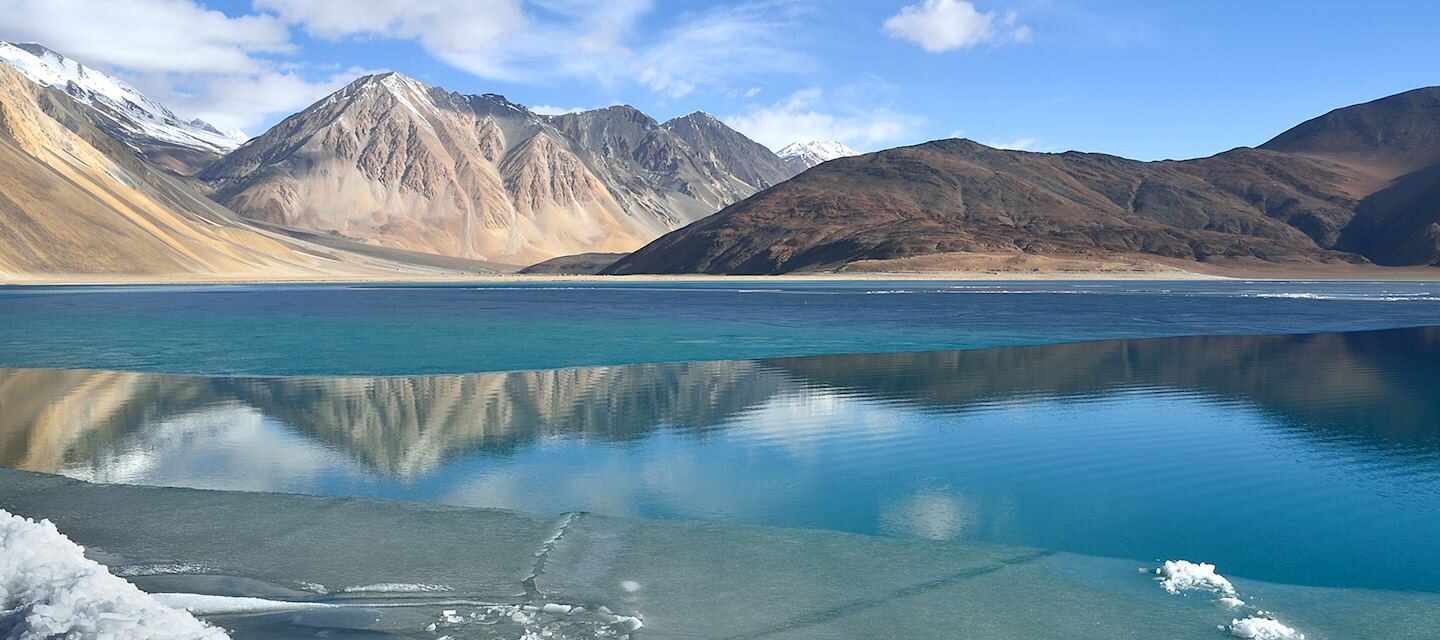
No ride to Tibet might be entirely without exploring its awe-inspiring natural landscapes and cultural treasures. From the long-lasting Potala Palace in Lhasa to the sacred Jokhang Temple and the bustling Barkhor Street, there are countless attractions to discover in Tibet’s capital town.
Outside of Lhasa, make certain to go to the stunning Namtso Lake, one of the maximum saltwater lakes within the international, and the majestic Mount Everest Base Camp, where you could witness the awe-inspiring splendor of the arena’s highest height up near.
Other have-to-see locations in Tibet encompass the historic metropolis of Shigatse, the picturesque city of Gyantse, and the holy Mount Kailash, revered by Hindus, Buddhists, Jains, and Bonpos alike.
Best places to visit in Tibet
Tibet, with its awe-inspiring landscapes, rich cultural historical past, and spiritual significance, offers a plethora of breathtaking locations for tourists to explore.
Whether you’re drawn to ancient monasteries nestled inside the mountains, serene lakes reflecting the clear blue sky, or towering peaks that pierce the clouds, Tibet has something to captivate each soul. Here are some of the high-quality locations to go to in Tibet:
1. Lhasa
As the capital of Tibet, Lhasa is a must-go vacation spot for vacationers. Home to iconic landmarks together with the Potala Palace, the Jokhang Temple, and Barkhor Street, Lhasa is a treasure trove of Tibetan tradition and records. Wander through the winding alleys of the vintage metropolis, soak within the religious surroundings of the monasteries, and wonder at the breathtaking views of the surrounding mountains.
2. Potala Palace
Perched atop Marpo Ri Hill, the Potala Palace stands as one of Tibet’s most iconic landmarks and a UNESCO World Heritage Site. This majestic castle-like structure has served as the winter residence of the Dalai Lamas for centuries and is renowned for its stunning architecture, intricate artwork, and rich history. Explore the ornately decorated halls, chapels, and tombs, and recognize the panoramic views of Lhasa Valley from the palace’s golden roof.
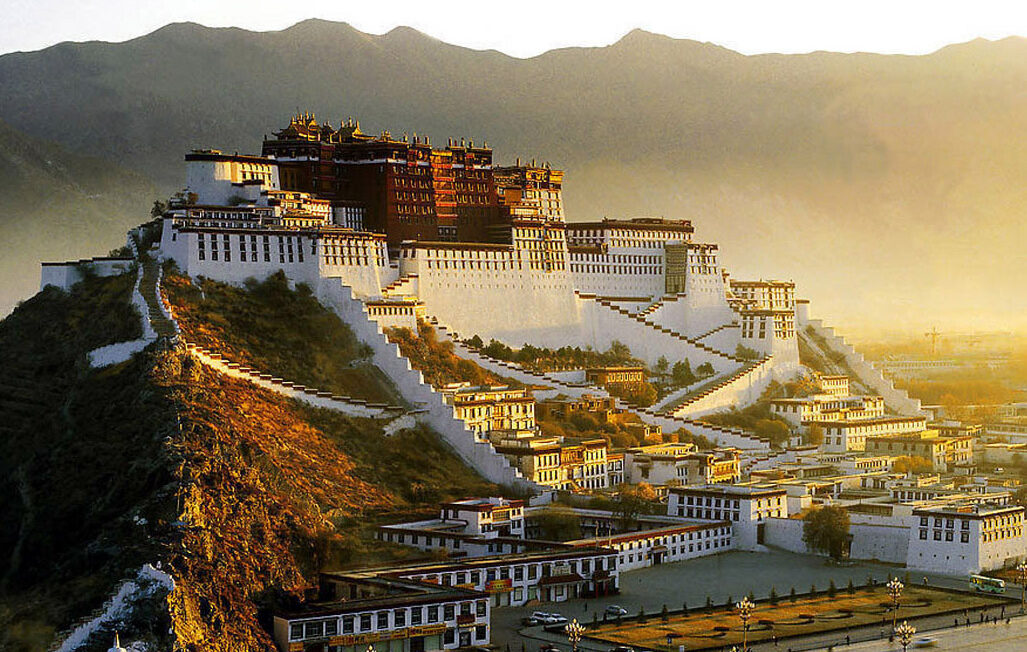
3. Jokhang Temple
Located in the heart of Lhasa, the Jokhang Temple is considered the holiest web page in Tibetan Buddhism. Built-in the 7th century through King Songtsen Gampo to house a respected statue of Buddha delivered as a dowry utilizing his Nepalese spouse, the temple is a masterpiece of Tibetan architecture and spiritual devotion. Join pilgrims as they prostrate in prayer around the temple’s perimeter and wonder at the complicated murals, statues, and artifacts inside.
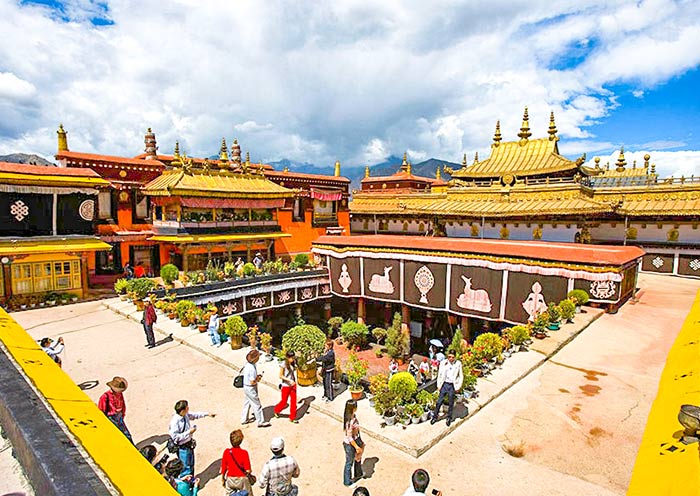
4. Namtso Lake
Situated at an altitude of over 4,700 meters (15,400 feet), Namtso Lake is one of the most saltwater lakes in the world and a place of breathtaking natural splendor. Surrounded by snow-capped mountains, big grasslands, and nomadic yak herders’ camps, Namtso offers a serene retreat from the hustle and bustle of modern-day existence.
Take a stroll alongside the lake’s seashores, admire the reflection of the sky in its crystal-clear waters, and witness the sunrise or sundown for an unforgettable experience.
5. Mount Everest Base Camp
For adventurers and mountaineers, going to the Mount Everest Base Camp is a dream come true. Located at the northern facet of the world’s highest peak, the bottom camp gives awe-inspiring views of Everest and the surrounding Himalayas.
Trekking to Everest Base Camp is a challenging but worthwhile experience, permitting you to immerse yourself in the majestic beauty of the world’s most famous mountain.
6. Tashilhunpo Monastery
Located within the city of Shigatse, Tashilhunpo Monastery is one of Tibet’s largest and most essential monastic establishments. Founded in 1447 by the first Dalai Lama, Gendun Drup, the monastery serves as the traditional seat of the Panchen Lama, the second highest-ranking lama in Tibetan Buddhism.
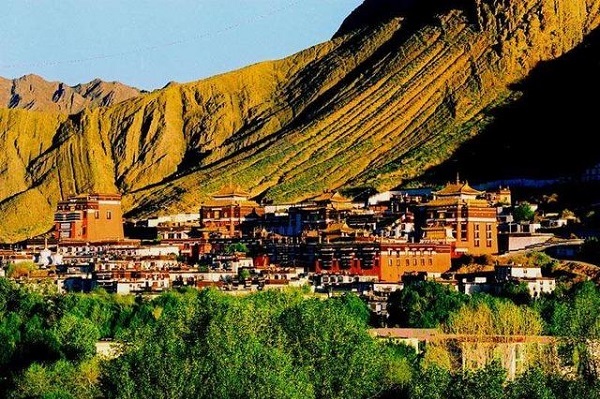
Explore the monastery’s ornate chapels, towering stupas, and bustling courtyards, and witness the clergymen engaged in prayer, debate, and formality ceremonies.
7. Yamdrok Lake
Known as one of Tibet’s 3 sacred lakes, Yamdrok Lake is famed for its lovely turquoise waters and dramatic mountain surroundings. Located among Lhasa and Gyantse, the lake is a popular forestall on the journey to Everest Base Camp. Take a scenic power along the lake’s shores, stop at viewpoints for panoramic image opportunities, and soak in the tranquil surroundings of this sacred and serene vacation spot.
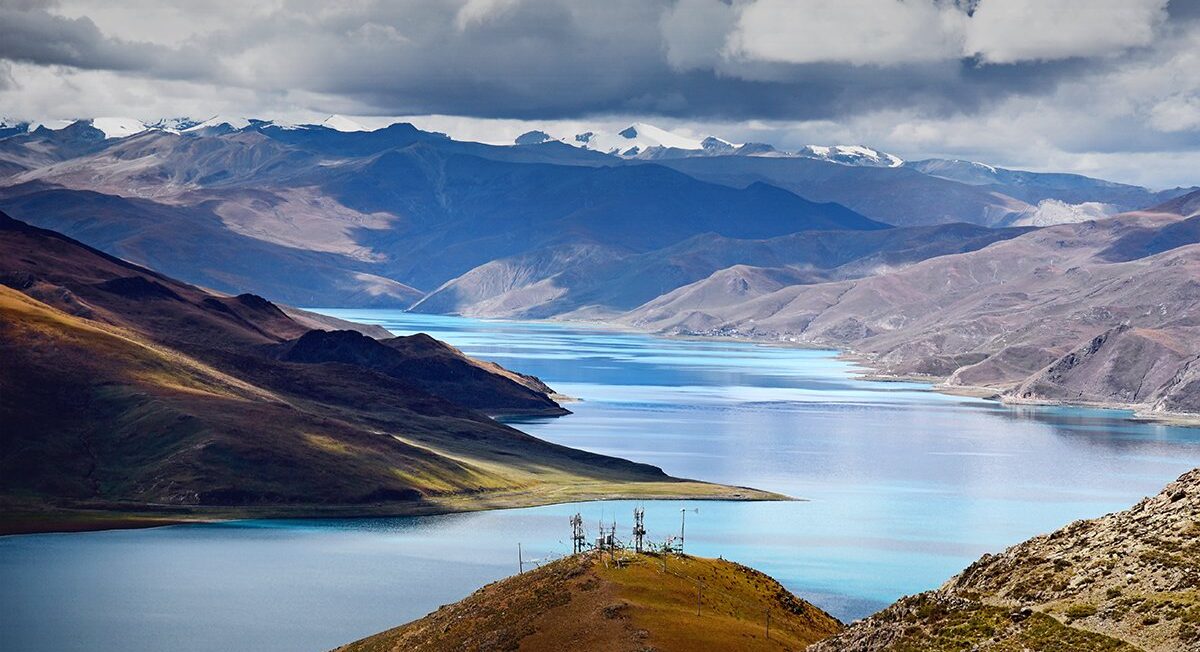
Best time to go to Tibet
The first-class time to visit Tibet largely relies upon your personal alternatives, hobbies, and tolerance for extreme climate situations. Tibet’s high altitude and precise geography deliver an upward push to distinct seasons, each presenting its set of advantages and challenges for vacationers. Here’s a breakdown of the first-rate instances of visiting Tibet based totally on various factors:
Spring (April to June):
Considered one of the best times to visit Tibet, spring sees warming temperatures and the landscape bursting to life with blooming flowers and lush greenery. During this time, temperatures are exceptionally mild, making it comfortable for outdoor sports which include hiking, sightseeing, and exploring monasteries.
Additionally, spring is an incredible time to witness traditional Tibetan fairs, together with the Saga Dawa Festival and the Shoton Festival, which have fun Buddhist traditions and lifestyles.
Summer (July to August):
Summer is the top vacation season in Tibet, as the climate is hot and sunny, and the region is teeming with tourists keen to discover its breathtaking landscapes and cultural treasures. However, it is critical to word that the summer season also brings higher tiers of rainfall, especially within the jap and southern elements of Tibet, which can cause occasional street closures and landslides.
Despite the occasional rain showers, summer continues to be a terrific time to go to Tibet, in particular for hiking, tenting, and outdoor adventures.
Autumn (September to October):
Considered widely as the best time to visit Tibet, autumn offers cool and dry weather with clear skies, providing stunning views of the Himalayas and other mountain ranges.
During this time, the landscape bursts with colorful hues of purple, orange, and gold as the leaves change color, creating a picturesque backdrop for sightseeing and photography. Autumn is likewise a popular time for trekking, in particular along the Everest Base Camp trek and other scenic routes.
Winter (November to March):
Winter sees significantly dropping temperatures and much of the region is covered in snow, making it the least popular time to visit Tibet. However, for adventurous vacationers willing to courageous the bloodless, iciness can be a mystical time to visit Tibet, with fewer crowds and the opportunity to enjoy traditional Tibetan festivals including Losar (Tibetan New Year).
Additionally, iciness is an excellent time for journeying hot springs, playing Tibetan delicacies, and experiencing the place’s specific lifestyle and hospitality.
Culture and Tradition of Tibet
Tibetan lifestyle and way of life are deeply rooted within the region’s specific records, geography, and spiritual history. As one of the highest inhabited areas on Earth, Tibet’s isolation and cruel surroundings have fostered an awesome manner of lifestyle characterized by way of resilience, spirituality, and community. Here’s a glimpse into the rich tapestry of Tibetan tradition and lifestyle:
1. Buddhism
Buddhism performs a principal function in Tibetan culture and is deeply intertwined with each thing of lifestyle. Tibetan Buddhism, a unique shape of Mahayana Buddhism, includes factors of Indian Buddhist philosophy, tantric practices, and indigenous Tibetan beliefs.
Monasteries and temples dot the Tibetan panorama, serving as facilities for non secular exercise, learning, and community life. The Dalai Lama and other high lamas are revered as spiritual leaders, while clergymen and nuns play vital roles as instructors, pupils, and practitioners.
2. Monastic Life
Monasticism is a fundamental factor of the Tibetan way of life, with heaps of priests and nuns living in monasteries and nunneries throughout the region. Monastic life revolves around a rigorous timetable of prayer, meditation, have a look at, and ritual ceremonies, aimed toward reaching religious enlightenment and reaping benefits for all sentient beings.
Monasteries serve as repositories of Tibetan spiritual and cultural history, housing historical scriptures, sacred artifacts, and first-rate works of art.
3. Festivals and Celebrations
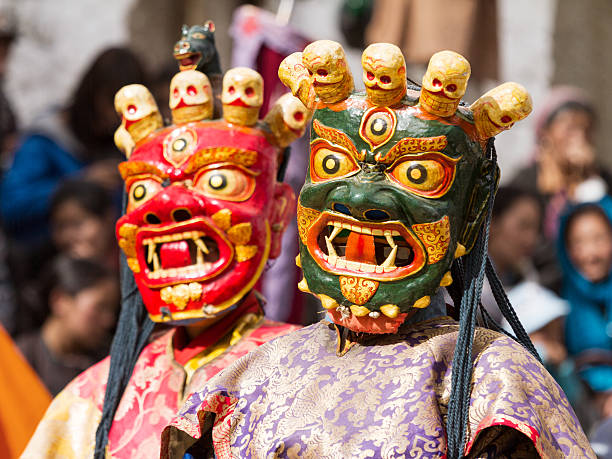
Tibetan gala’s are colorful celebrations that exhibit the vicinity’s rich cultural and historical past and non secular devotion. From the grandeur of the Tibetan New Year (Losar) to the colorful masked dances of the Cham Dance Festival, every pageant is a completely happy expression of faith, network, and way of life. Festivals often feature elaborate rituals, ceremonial processions, traditional music and dance, and offerings of meals, butter sculptures, and prayer flags.
4. Art and Architecture
Renowned for their intricate beauty and religious symbolism, Tibetan art and architecture adorn monasteries, temples, and palaces with elaborate murals, thangka artwork, and ornate wood carvings depicting Buddhist deities, celestial beings, and sacred landscapes.
Tibetan artists also excel in sculpture, metalwork, and textile weaving, creating magnificent statues, ritual objects, and intricate costumes for spiritual ceremonies and festivals.
5. Cuisine
Tibetan delicacies reflect the area’s high-altitude environment and nomadic lifestyle, with hearty dishes designed to provide sustenance and warmth in cold weather. Staple ingredients consist of barley, wheat, and yak products such as butter, cheese, and meat.
Tsampa, a roasted barley flour, serves as a nutritional staple and is frequently consumed mixed with butter tea or served alongside meat and vegetables. Other famous Tibetan dishes encompass momos (dumplings), thukpa (noodle soup), and yak butter tea.
6. Traditional Medicine
Tibetan traditional medicine, known as Sowa Rigpa, has been practiced for over a thousand years as an ancient healing system. Based on the concepts of balance and harmony, Tibetan medicine carries herbal treatments, dietary therapy, rub down, and nonsecular practices to deal with illness and sell holistic proper-being. Tibetan docs, called machines, go through big schooling and apprenticeship beneath experienced practitioners to master the artwork of diagnosis and treatment.
7. Nomadic Culture
Tibetan nomads, called drokpa, have inhabited the excessive plateaus of Tibet for hundreds of years, residing in a semi-nomadic lifestyle based totally on herding yaks, sheep, and goats. Nomadic subculture revolves around the rhythm of the seasons, with families shifting their herds between the summer season and wintry weather pastures searching for grazing land.
Yak hair tents, referred to as black tents, serve as transportable homes for nomadic families, imparting shelter from the elements at the same time as bearing in mind mobility and versatility.
Conclusion
Traveling to Tibet is an as soon as-in-a-lifetime enjoy that promises a journey, religious enlightenment, and profound cultural discovery. By taking the time to apprehend the lets and entry necessities, making ready for altitude sickness, packing as it should be, respecting local lifestyle and customs, and exploring the location’s have-to-see attractions, you may make the maximum of your adventure to this brilliant land.
Whether its awe-inspiring landscapes, rich cultural heritage, or deep spiritual traditions draw you, Tibet will undoubtedly leave a lasting impact on your heart and soul. So pack your bags, embark on your journey, and prepare to be enchanted by the magic of Tibet.

